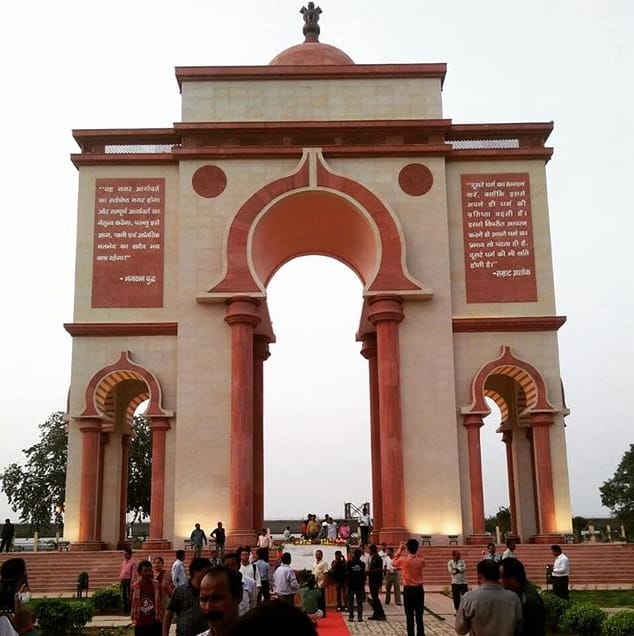
Sabhyata Dwar, or the "Civilization Gate," stands as a prominent monument in Patna, Bihar, symbolizing the region's rich historical and cultural heritage. Situated on the banks of the River Ganga, within the Samrat Ashok International Convention Centre complex near Gandhi Maidan, this architectural marvel was inaugurated on May 21, 2018, by Bihar's Chief Minister, Nitish Kumar.
Architectural Significance
Rising to a height of 32 meters, Sabhyata Dwar surpasses the Gateway of India in Mumbai by 6 meters and Patna's own Golghar by 3 meters. The structure is crafted from red and white sandstone, reflecting the Mauryan architectural style. It features two grand arches flanked by smaller ones, crowned with a stupa-like dome. Atop this dome rests a four-sided lion capital, reminiscent of Emperor Ashoka's emblem, symbolizing India's ancient legacy.
Historical Context
The concept of Sabhyata Dwar was proposed in 2010 by Lt. Gen. (Retd.) S.K. Sinha, aiming to commemorate the ancient city of Pataliputra, now Patna, which was a significant center during the Mauryan Empire. The monument's inscriptions include messages attributed to historical figures such as Megasthenes, Ashoka, Buddha, and Mahavira, highlighting Bihar's profound contributions to civilization.
Visitor Experience
Sabhyata Dwar is accessible to the public from Tuesday to Sunday, between 11:00 AM and 6:00 PM, with no entry fee. The site offers a serene environment, enhanced by ambient music and well-maintained gardens, making it a favored spot for relaxation and photography, especially during the evening hours.
Connectivity and Future Developments
Currently, access to Sabhyata Dwar is primarily through Gandhi Maidan. However, the upcoming Samagra Udyan project aims to transform Patna's riverfront, providing direct connectivity to the monument from the Ganga River, thereby enhancing its accessibility and integrating it further into the city's cultural landscape.
Sabhyata Dwar not only serves as a testament to Bihar's illustrious past but also stands as a beacon of its ongoing cultural renaissance, inviting visitors to explore and appreciate the state's enduring legacy.




 Back
Back
